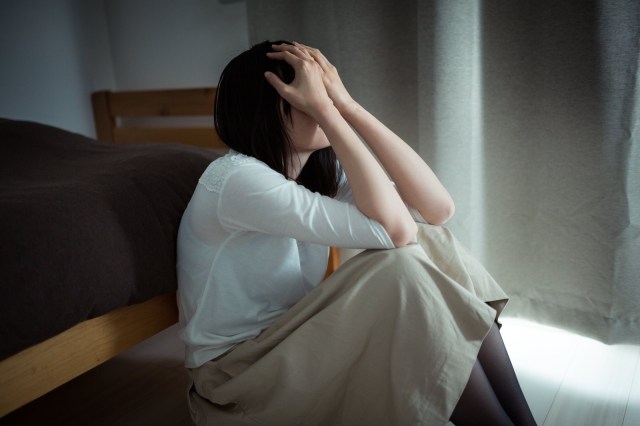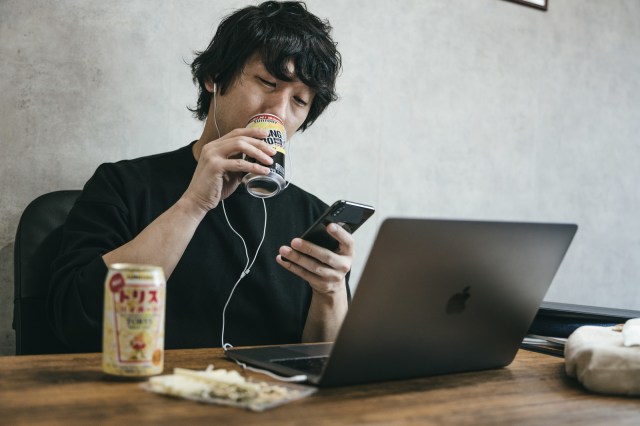
The survey results shed some light on how long people are willing to stay inside in the name of social distancing.
How long has it been since you last set foot outside the house? I left a moment ago to do some weeding, then hastily ran back inside to wash my hands. Even that tiny little respite is something, though; the feeling of warm sunlight against skin, the cooling hiss of wind carding through your hair. But the act of physically being outside is only half of the equation. What many people like me are missing — really, really missing — is the sensation of being around, talking with and enjoying life alongside other people.
And this brings us to the question posed by Japanese company Nomura Securities Co., who ran a survey based on statements released by Japan’s cabinet office: namely their call to action that people self-quarantine “as much as possible” in order to limit transmission of the contagious virus COVID-19. Though reductions have been seen in outside gatherings, there is also some doubt as to how long people can restrain themselves from going outside and congregating. On April 14, Nomura Societies released its analyses of the data.
▼ Working from home and Internet communication have eased some, but not all, of the hardship
Drawing from a pool of 1,473 responses regarding how long they felt capable of self-quarantining to prevent COVID-19 spread, the largest number — 36.9 percent — responded “about a week”, with 18.9 percent claiming they could last a full two weeks. The next highest percentage, 15.4 percent, was for those who felt they could stand to stay isolated just for two or three days.
Nomura Societies provided a weighted average for the survey’s over-18-year-old demographic: the average survey participant could last 14.4 days sequestered inside without any physical contact with the outside world. This average split in some interesting ways when interrogated by age: those in their 40s averaged to just 12 days, while recipients in their 70s averaged out to 18 days.
▼ The difference in limits may be linked to participants’ desire to leave the house for work.
As the development of COVID-19 is uncertain, and social distancing may be required to continue until at least 2022 in worst-case scenarios, this information can be helpful when implementing services to maintain mental health, levels of exercise and general daily structure during long periods of isolation. It is important to remember that many people, especially the elderly, disabled or individuals under home arrest, already have to stay indoors for extended periods and have developed habits and routines to keep going. And no matter how difficult it may feel to stay at home, you’re at least safe in the knowledge that you’re helping to keep others safe.
Source: LiveDoor News/Asahi Shimbun via Hachima Kikou
Top image: Pakutaso
Insert images: Pakutaso (1,2)
● Want to hear about SoraNews24’s latest articles as soon as they’re published? Follow us on Facebook and Twitter!



 Happy Virus-times! How has the pandemic affected Japan’s chocolate budget for Valentine’s Day?
Happy Virus-times! How has the pandemic affected Japan’s chocolate budget for Valentine’s Day? Rub-a-dub-dub and relax in a tub: Survey reveals wintertime bathing habits across Japan
Rub-a-dub-dub and relax in a tub: Survey reveals wintertime bathing habits across Japan Huge price hike for Japan Rail Pass triggers huge drop in foreign travelers who’ll buy it【Survey】
Huge price hike for Japan Rail Pass triggers huge drop in foreign travelers who’ll buy it【Survey】 Nearly half of young Japanese women say they “hate” the company they work for in survey
Nearly half of young Japanese women say they “hate” the company they work for in survey Survey reveals most Japanese workers want to work from home at least twice per week
Survey reveals most Japanese workers want to work from home at least twice per week McDonald’s new Happy Meals offer up cute and practical Sanrio lifestyle goods
McDonald’s new Happy Meals offer up cute and practical Sanrio lifestyle goods All-you-can-drink Starbucks and amazing views part of Tokyo’s new 170 meter-high sky lounge
All-you-can-drink Starbucks and amazing views part of Tokyo’s new 170 meter-high sky lounge More foreign tourists than ever before in history visited Japan last month
More foreign tourists than ever before in history visited Japan last month Starbucks reopens at Shibuya Scramble Crossing with new look and design concept
Starbucks reopens at Shibuya Scramble Crossing with new look and design concept Beautiful Sailor Moon manhole cover coasters being given out for free by Tokyo tourist center
Beautiful Sailor Moon manhole cover coasters being given out for free by Tokyo tourist center Studio Ghibli glasses cases let anime characters keep an eye on your spectacles
Studio Ghibli glasses cases let anime characters keep an eye on your spectacles Arrest proves a common Japanese saying about apologies and police
Arrest proves a common Japanese saying about apologies and police The oldest tunnel in Japan is believed to be haunted, and strange things happen when we go there
The oldest tunnel in Japan is believed to be haunted, and strange things happen when we go there Is the new Shinkansen Train Desk ticket worth it?
Is the new Shinkansen Train Desk ticket worth it? Hey, Japanese taxi driver! Take us to your favorite restaurant in Tsuruga City!
Hey, Japanese taxi driver! Take us to your favorite restaurant in Tsuruga City! Disney princesses get official manga makeovers for Manga Princess Cafe opening in Tokyo
Disney princesses get official manga makeovers for Manga Princess Cafe opening in Tokyo We try out “Chan Ramen”, an underground type of ramen popular in the ramen community
We try out “Chan Ramen”, an underground type of ramen popular in the ramen community Beautiful new Final Fantasy T-shirt collection on the way from Uniqlo【Photos】
Beautiful new Final Fantasy T-shirt collection on the way from Uniqlo【Photos】 Foreign English teachers in Japan pick their favorite Japanese-language phrases【Survey】
Foreign English teachers in Japan pick their favorite Japanese-language phrases【Survey】 There’s a park inside Japan where you can also see Japan inside the park
There’s a park inside Japan where you can also see Japan inside the park Japanese convenience store packs a whole bento into an onigiri rice ball
Japanese convenience store packs a whole bento into an onigiri rice ball Studio Ghibli releases Kiki’s Delivery Service chocolate cake pouches in Japan
Studio Ghibli releases Kiki’s Delivery Service chocolate cake pouches in Japan Japan’s bone-breaking and record-breaking roller coaster is permanently shutting down
Japan’s bone-breaking and record-breaking roller coaster is permanently shutting down New definition of “Japanese whiskey” goes into effect to prevent fakes from fooling overseas buyers
New definition of “Japanese whiskey” goes into effect to prevent fakes from fooling overseas buyers Foreign passenger shoves conductor on one of the last full runs for Japan’s Thunderbird train
Foreign passenger shoves conductor on one of the last full runs for Japan’s Thunderbird train Our Japanese reporter visits Costco in the U.S., finds super American and very Japanese things
Our Japanese reporter visits Costco in the U.S., finds super American and very Japanese things Kyoto bans tourists from geisha alleys in Gion, with fines for those who don’t follow rules
Kyoto bans tourists from geisha alleys in Gion, with fines for those who don’t follow rules Studio Ghibli unveils Mother’s Day gift set that captures the love in My Neighbour Totoro
Studio Ghibli unveils Mother’s Day gift set that captures the love in My Neighbour Totoro Domino’s Japan now sells…pizza ears?
Domino’s Japan now sells…pizza ears? New Japanese KitKat flavour stars Sanrio characters, including Hello Kitty
New Japanese KitKat flavour stars Sanrio characters, including Hello Kitty Sales of Japan’s most convenient train ticket/shopping payment cards suspended indefinitely
Sales of Japan’s most convenient train ticket/shopping payment cards suspended indefinitely Sold-out Studio Ghibli desktop humidifiers are back so Totoro can help you through the dry season
Sold-out Studio Ghibli desktop humidifiers are back so Totoro can help you through the dry season Japanese government to make first change to romanization spelling rules since the 1950s
Japanese government to make first change to romanization spelling rules since the 1950s Ghibli founders Toshio Suzuki and Hayao Miyazaki contribute to Japanese whisky Totoro label design
Ghibli founders Toshio Suzuki and Hayao Miyazaki contribute to Japanese whisky Totoro label design Doraemon found buried at sea as scene from 1993 anime becomes real life【Photos】
Doraemon found buried at sea as scene from 1993 anime becomes real life【Photos】 Tokyo’s most famous Starbucks is closed
Tokyo’s most famous Starbucks is closed One Piece characters’ nationalities revealed, but fans have mixed opinions
One Piece characters’ nationalities revealed, but fans have mixed opinions We asked a Uniqlo employee what four things we should buy and their suggestions didn’t disappoint
We asked a Uniqlo employee what four things we should buy and their suggestions didn’t disappoint Princesses, fruits, and blacksmiths: Study reveals the 30 most unusual family names in Japan
Princesses, fruits, and blacksmiths: Study reveals the 30 most unusual family names in Japan Studio Ghibli’s new desktop Howl’s Moving Castle will take your stationery on an adventure
Studio Ghibli’s new desktop Howl’s Moving Castle will take your stationery on an adventure Poll in Japan shows zero percent of students are aiming to work in goods distribution
Poll in Japan shows zero percent of students are aiming to work in goods distribution Population aging in Japan gets a corona-boost as pregnancies drop by 11 percent this year
Population aging in Japan gets a corona-boost as pregnancies drop by 11 percent this year Majority of younger Japanese people in survey respect less than 30 percent of their old coworkers
Majority of younger Japanese people in survey respect less than 30 percent of their old coworkers Which jobs in Japan have the most and least overtime? Survey investigates
Which jobs in Japan have the most and least overtime? Survey investigates Chinese restaurant gives discounts to women based on their breast size, G-cup gets 65 percent off
Chinese restaurant gives discounts to women based on their breast size, G-cup gets 65 percent off Young Japanese adults in survey don’t even want to live to Japan’s average life expectancy
Young Japanese adults in survey don’t even want to live to Japan’s average life expectancy Mask rules in Japan have changed…so are people still wearing them?
Mask rules in Japan have changed…so are people still wearing them? Japanese survey reveals having a significant other slows your pace, makes you lazier
Japanese survey reveals having a significant other slows your pace, makes you lazier How much money do you need to live in your own apartment in Japan?【Survey】
How much money do you need to live in your own apartment in Japan?【Survey】 Rate of young Japanese people who want to get married someday drops to lowest ever in survey
Rate of young Japanese people who want to get married someday drops to lowest ever in survey “Is it acceptable to go to a family restaurant for your first date?” Japanese survey asks
“Is it acceptable to go to a family restaurant for your first date?” Japanese survey asks What pandemic? Onsen towns, hiking trails and theme parks packed with crowds on four-day weekend
What pandemic? Onsen towns, hiking trails and theme parks packed with crowds on four-day weekend What’s the minimum amount of money Japanese women want their husbands to earn? Survey investigates
What’s the minimum amount of money Japanese women want their husbands to earn? Survey investigates Nearly half of survey respondents in Japan feel healthier since before COVID-19
Nearly half of survey respondents in Japan feel healthier since before COVID-19 Is it time for men in Japan to start using parasols? Survey says guys ready to get out of the sun
Is it time for men in Japan to start using parasols? Survey says guys ready to get out of the sun
Leave a Reply